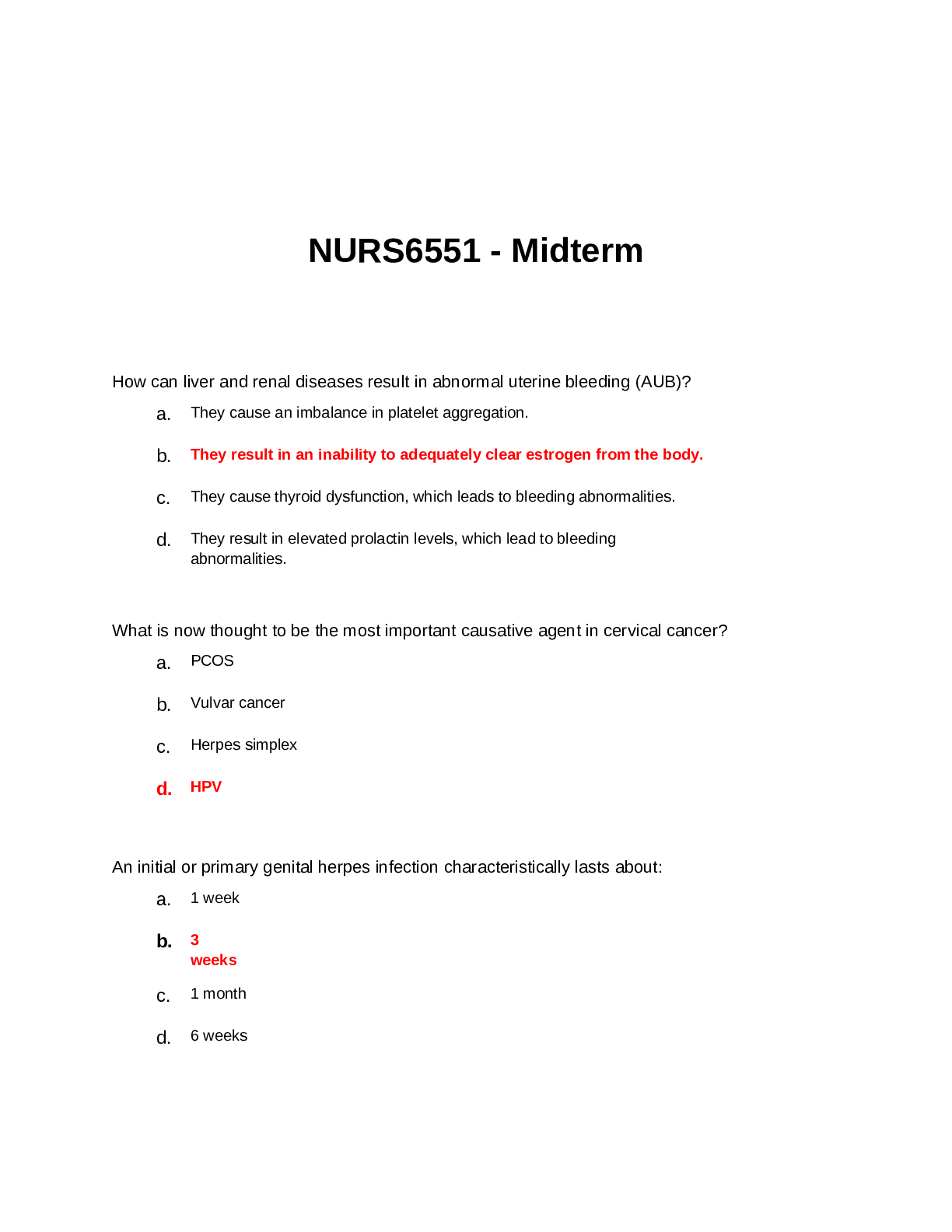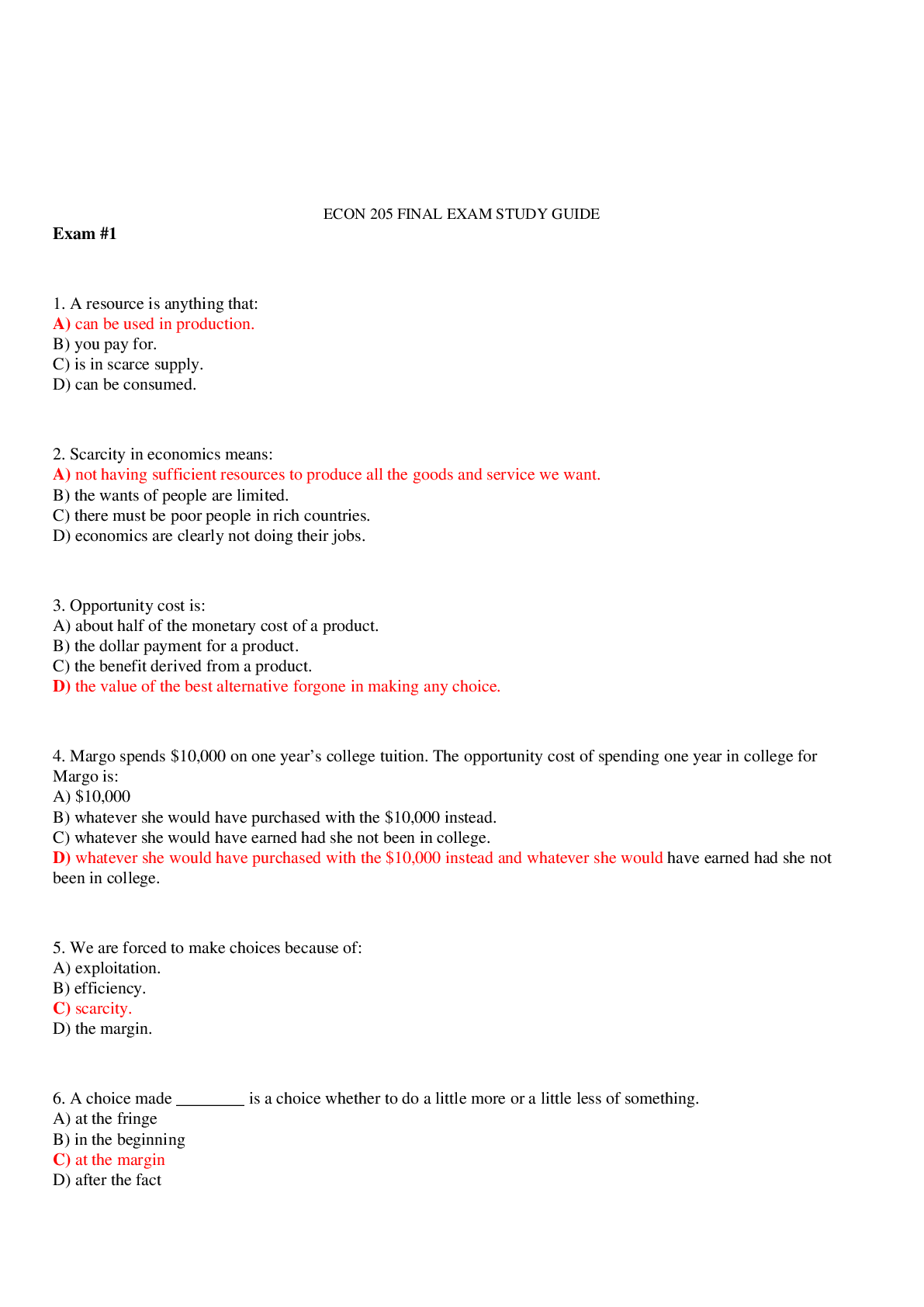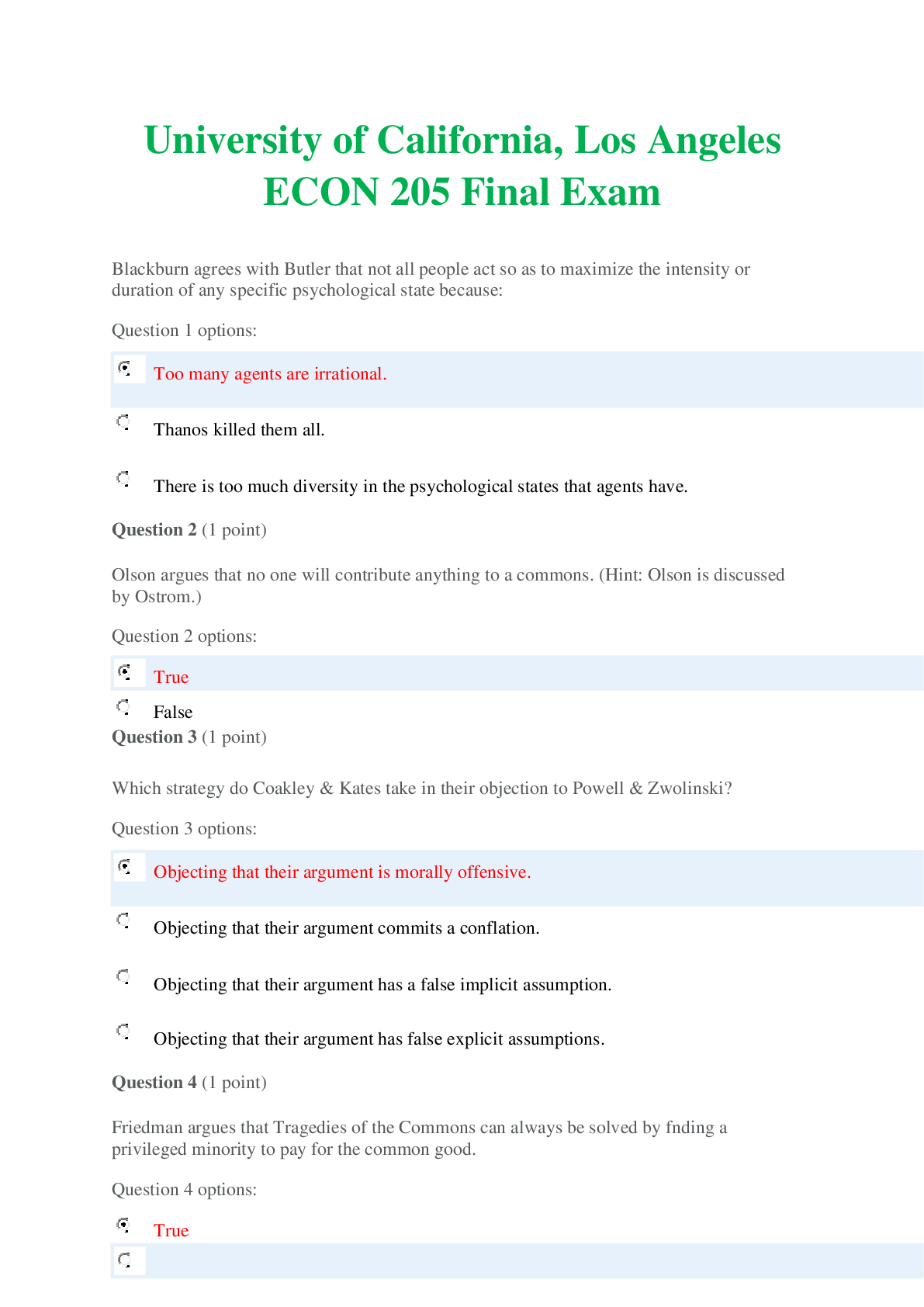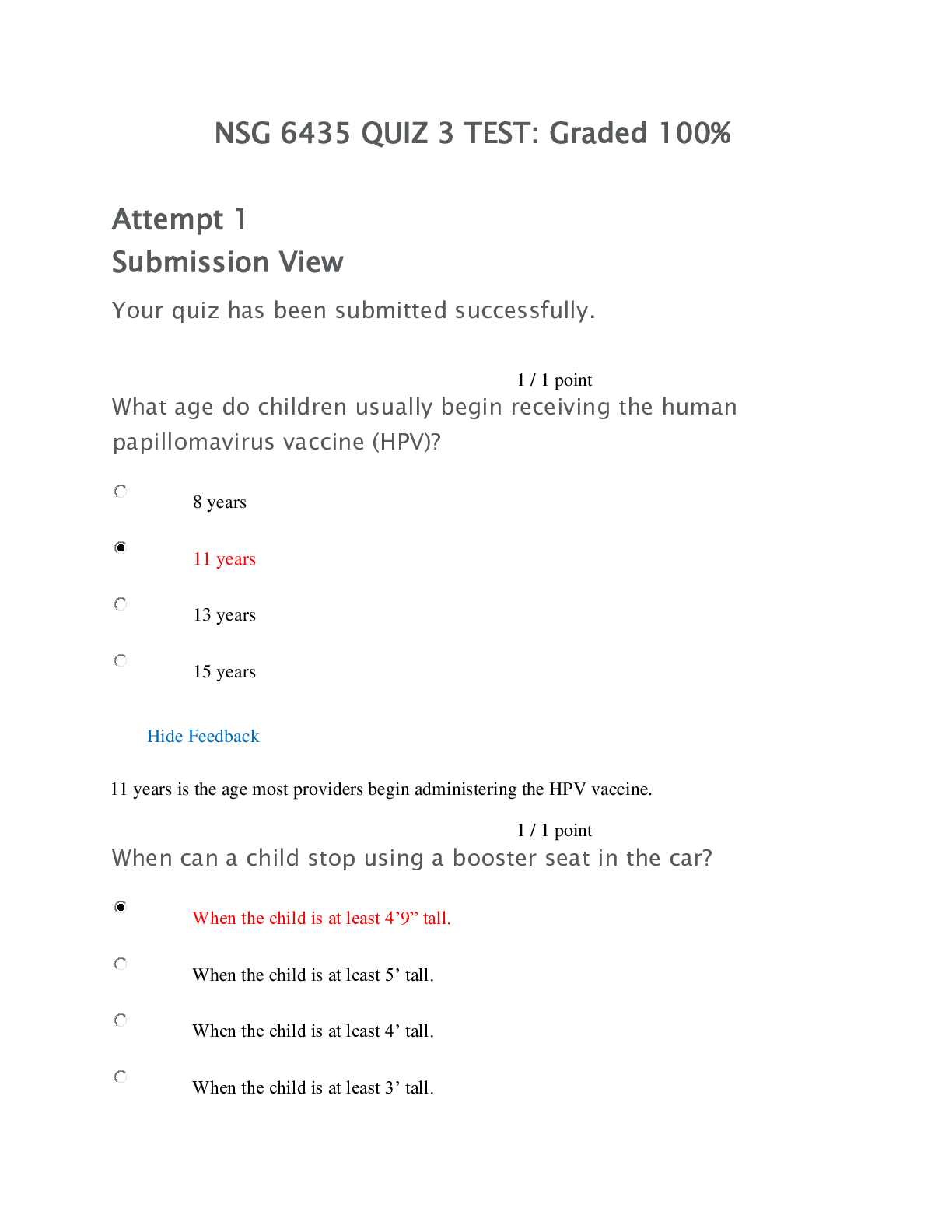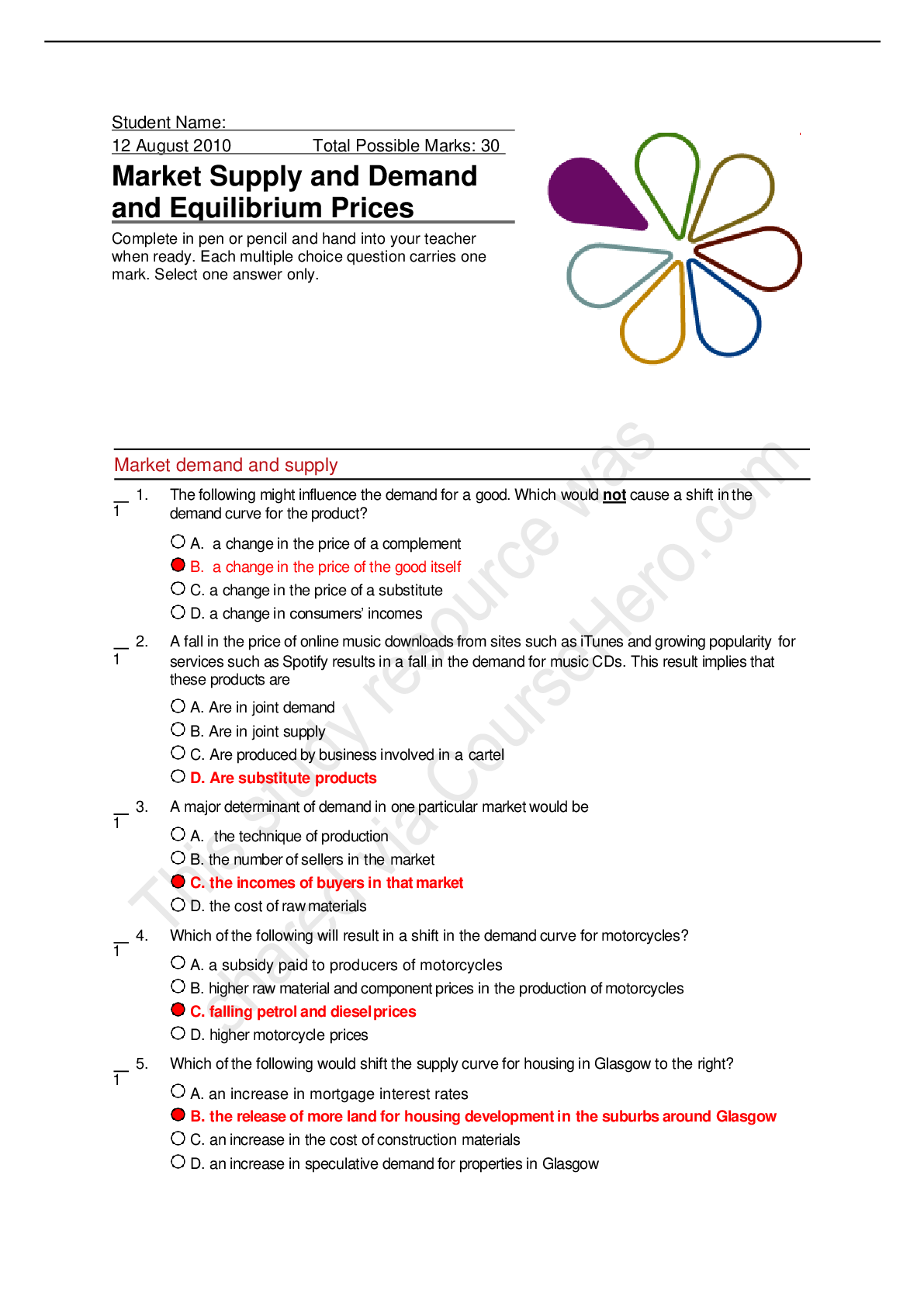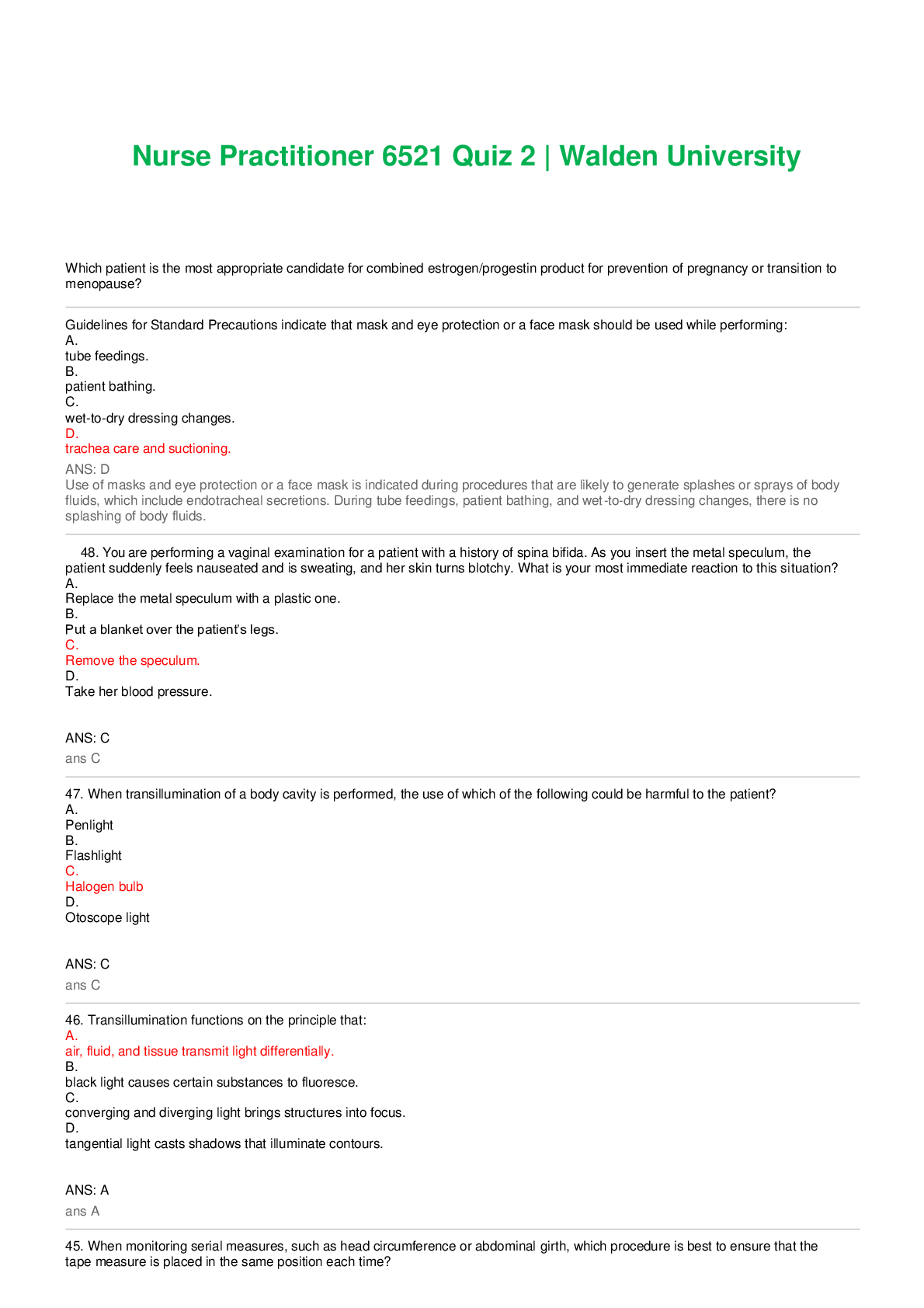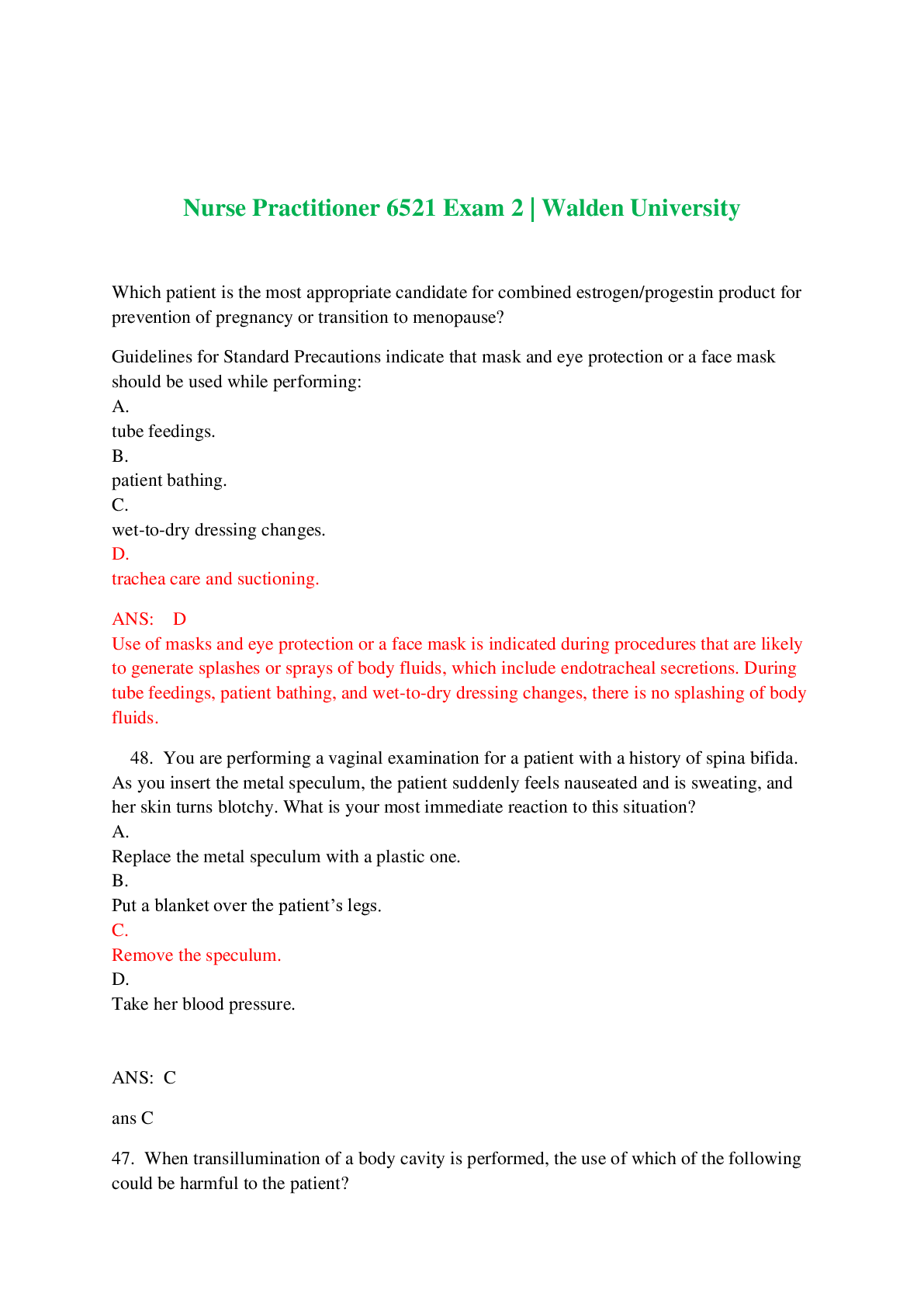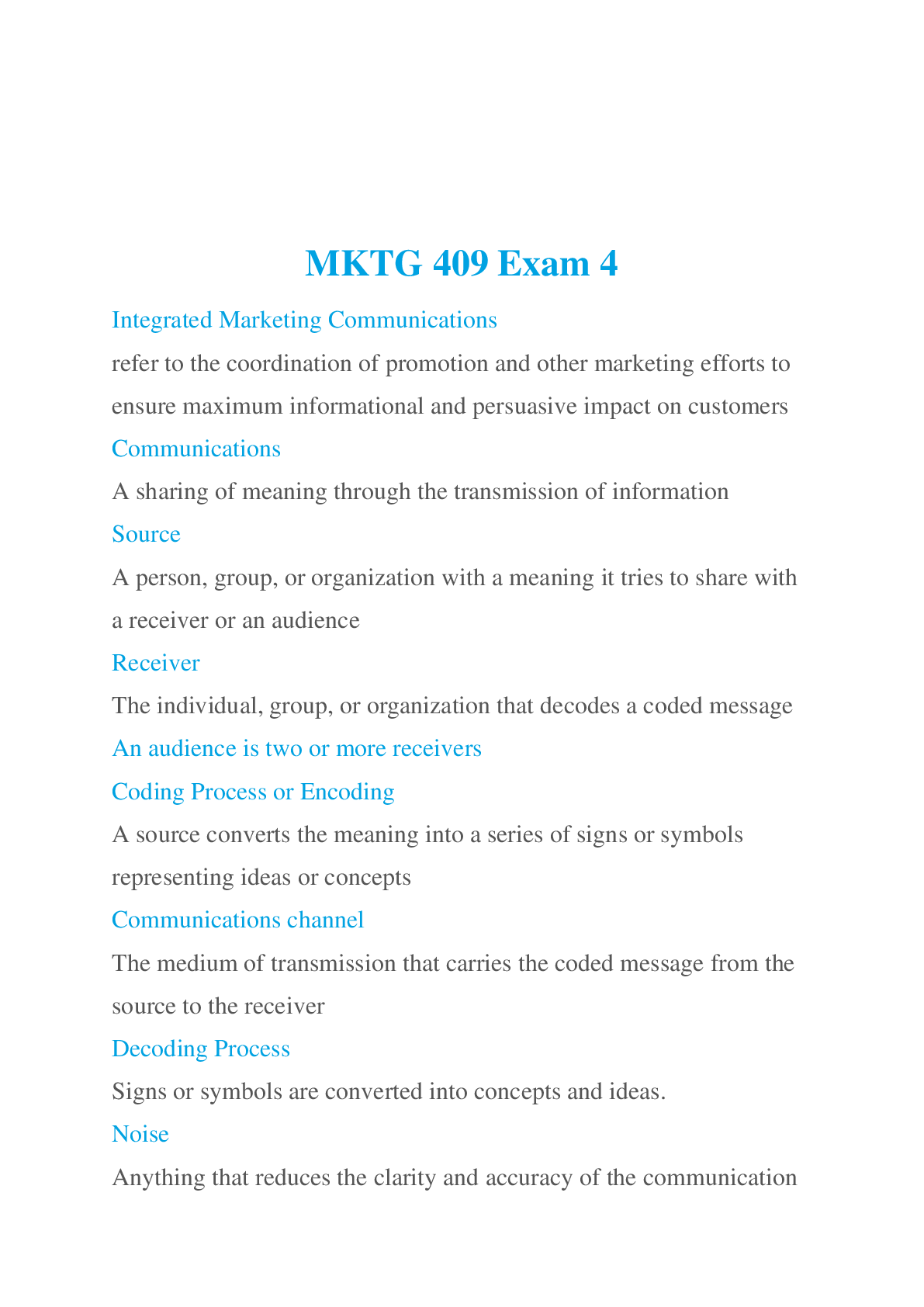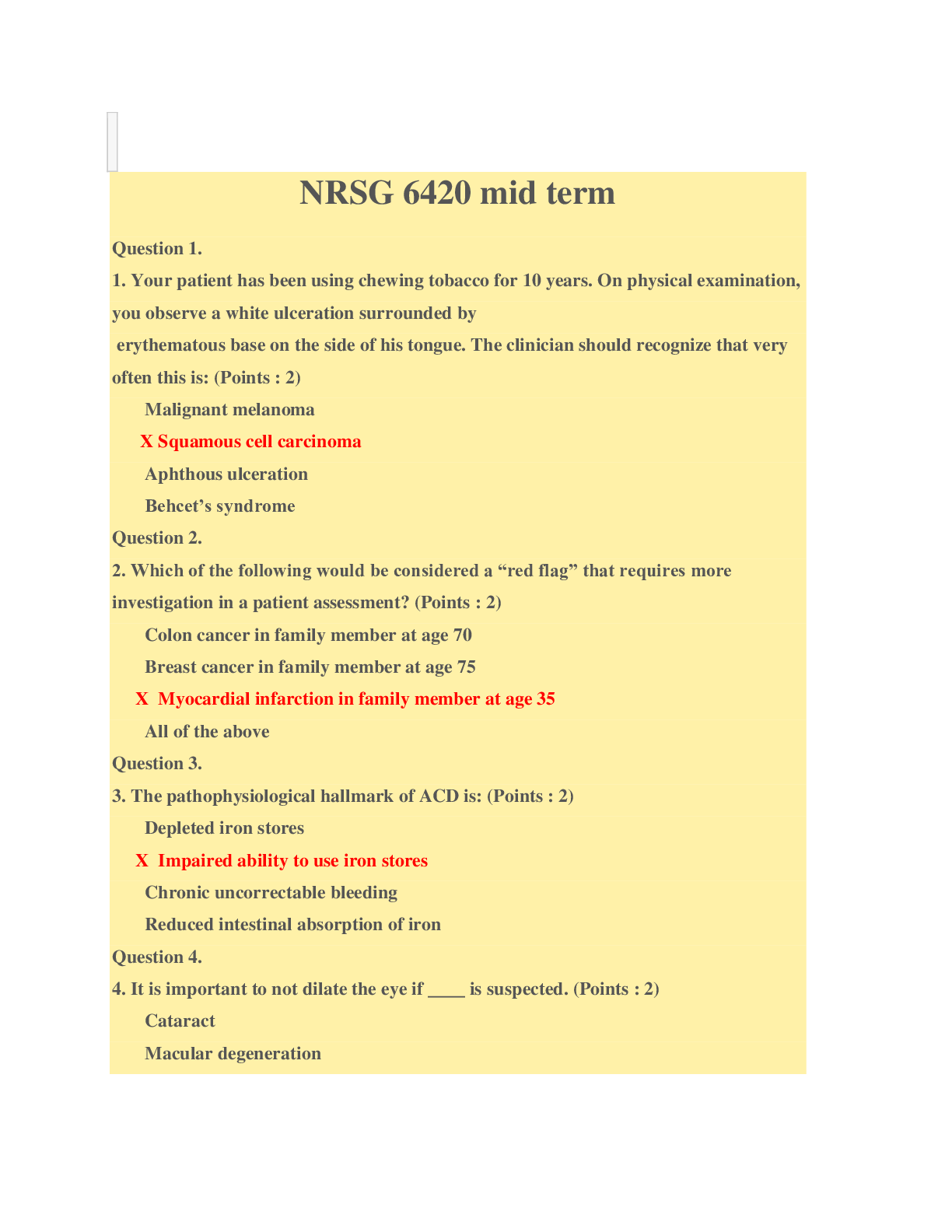Health Care Delivery System
Document Content and Description Below
Health Care Delivery System Prospective payment system PPS Payment mechanism for reimbursing hospitals for inpatient health care services in which predetermined rate is set for treatment of specif... ic illnesses eliminated cost-based reimbursement by grouping inpatient services for Medicare clients into 468 diagnosis related group DRGs Diagnosis-related groups DRGs groups of inpatient services with fixed reimbursement amounts with adjustments based on severity, regional costs, and teaching cost, regardless of length of stay or use of service classification is based on the following variables: primary and secondary diagnosis, comorbidities, primary and secondary procedures, and age includes patients whose diagnoses are related,usually by body system or broad disease type, such as heart disease capitation payment mechanism in which a provider i e health care network receives a fixed amount of payment per enrollee managed care decribes health care systems in which there is administrative control over primary health care services for a defined client population.The provider of care receives a predetermined capitated payment regardless of the service a client uses redundant facilities and services are eliminated, and costs are reduced. preventive care and health education are emphasized single portal of entry equal gate keeper medicare national health insurance program for people 65 and older or disabled. prospective reimbursement system is based on payment calculated on the basis of DRG and PPS assignment. reimbursements allowable services and copays are set by law in congress to receive providers must meet requirements and are audited and inspected medicaid joint fed and state provides health insurance for low-income families, health assistance to low-income people with long-term care disabilities, and supplemental coverage to older adults and medicare beneficiaries in nursing homes state decides who qualifies coordinated by the state audit providers differences between primary health care and primary care primary care focuses on health services provided on an individual basis, whereas primary health care focuses on improved health outcomes for an entire population professional standards review organizations PSROs review the quality, quantity, and cost of health care services provided through medicare medicaid require physician supervision created by the federal government to review the quality, quantity, and cost of hospital care. work redesign allowed more services to be available on nursing units, minimizing the need to transfer and transport clients across multiple diagnostic and treatment areas case management Because of the need to contain costs, many hospitals uses a case management model of care. In which a case manager coordinates effors to achieve the most efficient and appropriate plan of care for the client, focusing primarily on discharge planning discharge planning this planning begins the moment a client is admitted to a health care facility. a centralized, coordinated, multidisciplinary process that ensures that the client has a plan for continuing care after leaving a health care agency especially important if leaving with restrictions may need referrals involves patient and family provides resources critical pathway multidisciplinary treatment plan that oulines the treatments or interventions clients need to have while in the hospital for a specific condition or procedure instruction prior to discharge safe and effective use of meds and equipment, instruction in food-drug interactions and diet counseling, rehab techniques, access to avilable community resources, when and how to obtain further treatment, and the client's and family's responsibilities and the knowledge needed to carry out those responsibilities home care service provision of medically related professional services and equipment to clients in their homes for health maintenance, education, illness prevention, treatment, palliation, and rehab types of home care services wound care, respiratory care, vitals, elimination, nutrition, rehabilitation, medications, intravenous therapy, laboratory studies rehabilitation restores a person to the fullest physical, mental, social, vocational, and economic potential possible. reduces complications maximize functioning extended care facility provides intermediate medical, nursing, or custodial care for clients recovering from an acute illness or clients with chronic illnesses or disabilities intermediate care or skilled nursing facility offers skilled care from a licensed nursing staff extensive support care restorative care recovering from acute or chronic illness or disability restores patient health status and functional level nursing center provides 24 hr intermediate and custodial care such as nursing rehabilitation, dietary, recreational, social, and religious services for residents of any age with chronic or debilitating illnesses assisted living assistance with some A D L homier environment and greater resident autonomy respite care short-term relief for the family members who care for an ill disabled or frail adult adult day care center provides a variety of health and social services to specific client populations who live alone or with family in the community. who do not require hospitalization but need supervision Services offered during the day allow family members to maintain their lifestyles & employment & still provide home care for their relatives. hospice system of family centered care that allows patient to live and remain at home with comfort independence and dignity while while relieving family stress focus of care is palliative, not curative symptom management evidenced-based practice problem solving approach that involves the use of current best evidence, along with clinical expertise and client preferences and values in making decision about client care research-based practice the use of knowledge based on the results of research studies quality improvement a continuous process that focuses on improving the performance of all providers nursing-sensative outcomes client outcomes that are directly related to nursing care seven dimensions that most affect clients' experiences 1) respect values, preferences, and expressed needs 2) coordination and integration of care 3) information, communication, and education 4) physical comfort 5) emotional support and relief of fear and anxiety 6) involvement of family and friends 7) transition and continuity Primary Prevention health-promoting behaviors or activities that reduce the occurence of an illness Secondary Prevention early diagnosis adn treatment of illness e.g., screening for hypertension Tertiary Prevention Care that prevents further progression of disease primary care focuses on health services provided on an individual basis. prenatal care, well baby care, family planning, nutrition counseling, etc. preventive care blood pressure and cancer screening, immunizations, poison control information, community legislation seat belt, air bags, bike helmets, Mental health counseling and crisis prevention Secondary Acute Care Emergency care, acute medical surgical care, radiological procedures Tertiary Care Intensive care, subacute care critically ill unstable close monitoring most expensive Continuing Care These services are for person who are disables, who never were functionally independent, or who suffer a terminal disease. prolonged period Assisted living, psychiatric and older adult day care what nurses need to do nurses need to remain knowledgable and proactive about issues in the health care delivery system to provide quality client care and positively affect health. Emphasis on Population Wellness The United States health care delivery system faces many issues such as rising cost of health care, increased access to services, a growing population, improved quality of outcomes, and threats of bioterrorism. The Health Services Pyramid developed by the Core Functions Project (U.S. Public Health Service, 1994/2000) serves as a model for improving the health care of U.S. citizens Integrated Delivery Networks IDN includes a set of providers and services organized to deliver a continuum of care to a population of clients at a capitated cost in a particular setting. Reduces duplication of services across levels or settings of care to ensure that clients receive care in the most appropriate settings. Disease Prevention Activities that protect people from becoming ill because of actual or potential health threats Disease Management is the most common and expensive service of the health care delivery system Work Redesign To contain cost, many hospitals have redesigned nursing units. Because of work redesign, more services are available on nursing units, thus minimizing the need to transfer and transport clients across multiple diagnostic and treatment areas. home care service provision of medical professionals and equipment to patients home focus on health promotion, education independence durable medical equipment DME, which is any medical product adapted for home use. Assisted living offers an attractive long-term care setting with a homier environment and greater resident autonomy. Clients require some assistance w/ADL but remain relatively independent within a partially protective setting. Assisted living provides independence, security, and privacy al at the same time.(With no government fee caps adn little regulation, assisted living is not always an option for individuals with limited financial resources.) Nursing Outcome Classification NOC emphasizes outcomes that nursing interventions most affect. However, all health care disciplines can use this system. Nursing informatics combines the best of computer science and information science with nursing science. Data / information are individually distince pieces of reality Nurses gain or use information when they organize, structure, or interpret data. Knowledge develops when nurses combine and identify relationships between different pieces of information. Electronic Health Record (EHR) provides a comprehensive electronic record of a clients medical problems, treatment, diagnostic procedures, and nursing care. Globalization physicians adn health care providers making their services more accessible. (across state and national boundaries) Utilization Review Commitee UR physician-supervised committees to review admissions, diagnostic testing, and treatments provided by physicians or health care providers to patients third party payer enrollee has contract with insurance company pays premium sees authorized providers insurance pays for the services in whole or in part insurance has contract with provider health maintenance organization HMO managed care provide primary health care services for a preset fee by number of members physician takes risk of heavy users controls over use preferred provider organization PPO managed care contractual arrangement between hospitals providers insurers employers and others to form a network negotiate with group purchasers for defined population at set price medicare part B physicians select Out patient services not prescriptions glasses or dentures medicare part a hospital services skilled nursing care services children health insurance program fed cooperative state fed coverage for children above medicaid limits below ability to buy insurance [Show More]
Last updated: 2 years ago
Preview 1 out of 4 pages
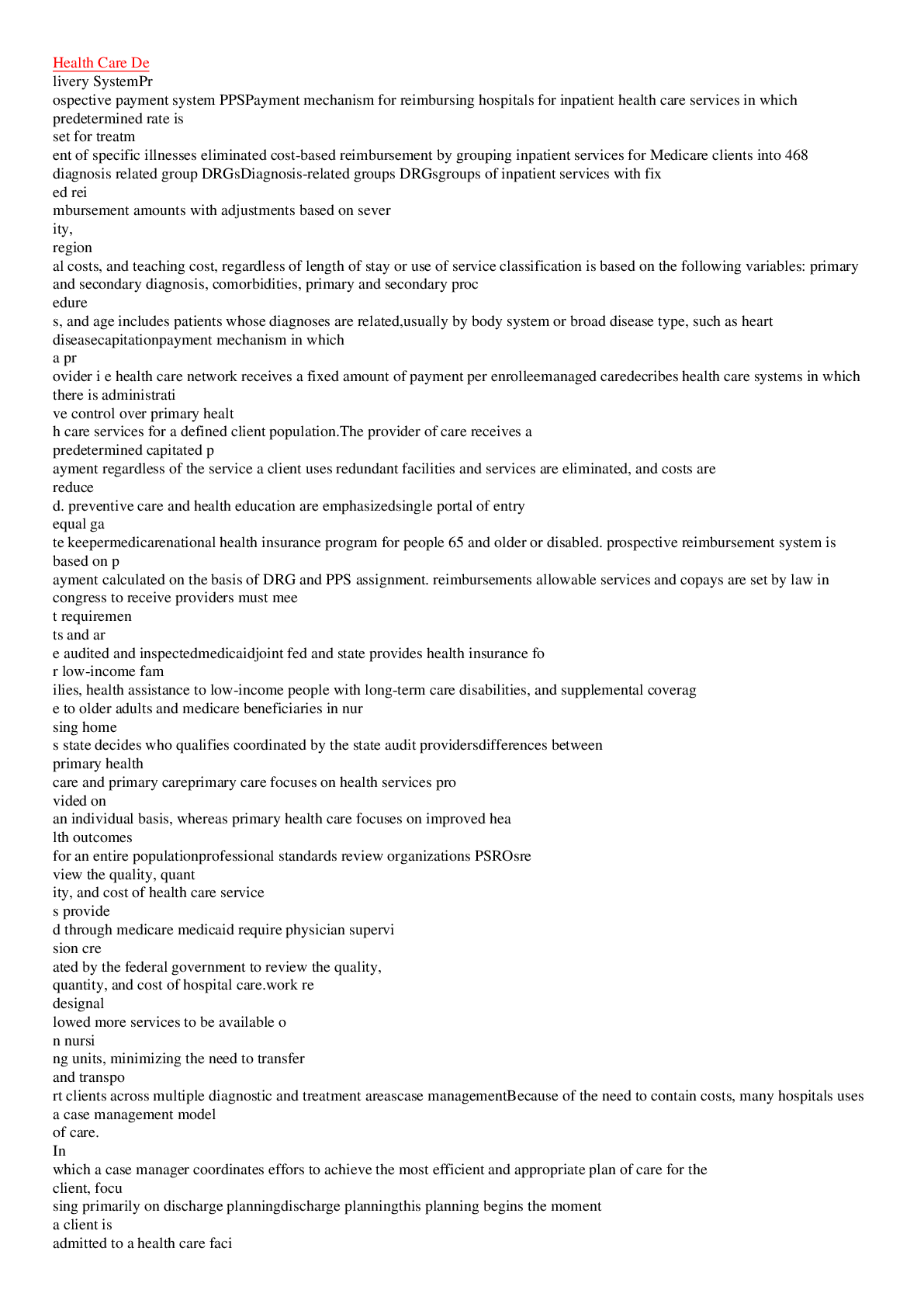
Buy this document to get the full access instantly
Instant Download Access after purchase
Buy NowInstant download
We Accept:

Reviews( 0 )
$12.00
Can't find what you want? Try our AI powered Search
Document information
Connected school, study & course
About the document
Uploaded On
Nov 07, 2022
Number of pages
4
Written in
Additional information
This document has been written for:
Uploaded
Nov 07, 2022
Downloads
0
Views
174













